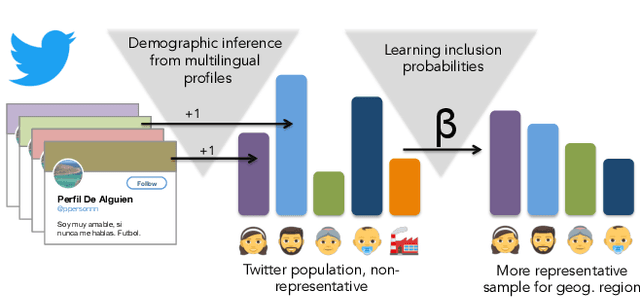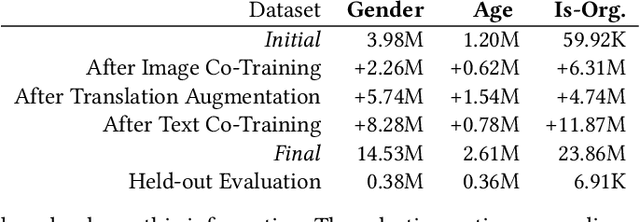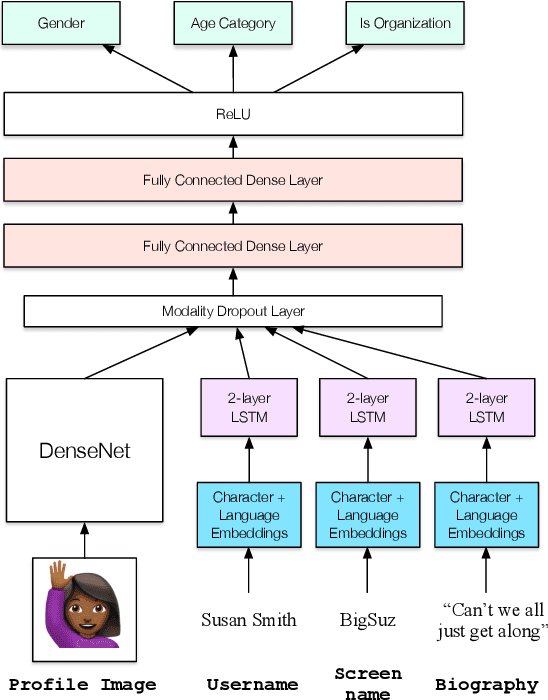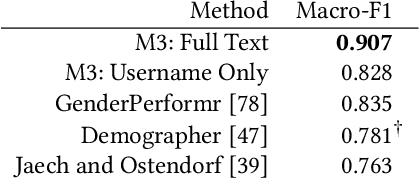Fabian Flöck
Demographic Inference and Representative Population Estimates from Multilingual Social Media Data
May 15, 2019



Abstract:Social media provide access to behavioural data at an unprecedented scale and granularity. However, using these data to understand phenomena in a broader population is difficult due to their non-representativeness and the bias of statistical inference tools towards dominant languages and groups. While demographic attribute inference could be used to mitigate such bias, current techniques are almost entirely monolingual and fail to work in a global environment. We address these challenges by combining multilingual demographic inference with post-stratification to create a more representative population sample. To learn demographic attributes, we create a new multimodal deep neural architecture for joint classification of age, gender, and organization-status of social media users that operates in 32 languages. This method substantially outperforms current state of the art while also reducing algorithmic bias. To correct for sampling biases, we propose fully interpretable multilevel regression methods that estimate inclusion probabilities from inferred joint population counts and ground-truth population counts. In a large experiment over multilingual heterogeneous European regions, we show that our demographic inference and bias correction together allow for more accurate estimates of populations and make a significant step towards representative social sensing in downstream applications with multilingual social media.
* 12 pages, 10 figures, Proceedings of the 2019 World Wide Web Conference (WWW '19)
TokTrack: A Complete Token Provenance and Change Tracking Dataset for the English Wikipedia
Mar 23, 2017



Abstract:We present a dataset that contains every instance of all tokens (~ words) ever written in undeleted, non-redirect English Wikipedia articles until October 2016, in total 13,545,349,787 instances. Each token is annotated with (i) the article revision it was originally created in, and (ii) lists with all the revisions in which the token was ever deleted and (potentially) re-added and re-deleted from its article, enabling a complete and straightforward tracking of its history. This data would be exceedingly hard to create by an average potential user as it is (i) very expensive to compute and as (ii) accurately tracking the history of each token in revisioned documents is a non-trivial task. Adapting a state-of-the-art algorithm, we have produced a dataset that allows for a range of analyses and metrics, already popular in research and going beyond, to be generated on complete-Wikipedia scale; ensuring quality and allowing researchers to forego expensive text-comparison computation, which so far has hindered scalable usage. We show how this data enables, on token-level, computation of provenance, measuring survival of content over time, very detailed conflict metrics, and fine-grained interactions of editors like partial reverts, re-additions and other metrics, in the process gaining several novel insights.
 Add to Chrome
Add to Chrome Add to Firefox
Add to Firefox Add to Edge
Add to Edge